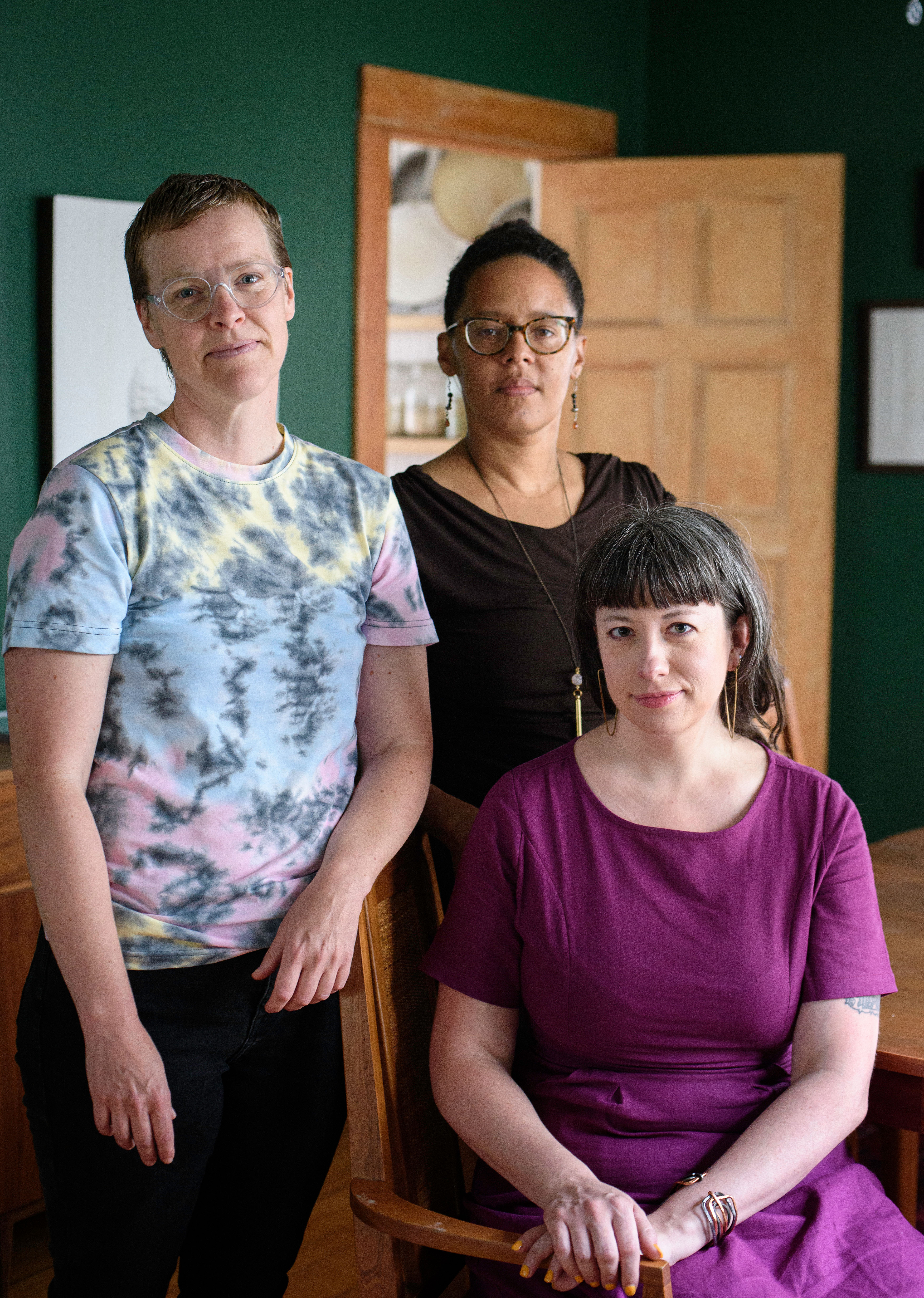October 11, 2021
Minneapolis loves lawn signs. The city’s yards are full of signs declaring school pride and endorsing political candidates and philosophies. Lacey Prpić Hedtke, Miré Regulus, and Diver Van Avery wanted to take this civic tradition to the next level. These three artists--who are co-directors of Free the Deeds--decided to use lawn signs to expose racial covenants. They worked with artist stowe silver to create a series of signs that are meant to connect individual properties to this history.

Free the Deeds Artists Diver Van Avery, Miré Regulus, and Lacey Prpić Hedtke.
The reality of racial covenants hits close to home for Diver and Miré. Diver grew up in the Hale neighborhood of South Minneapolis in a home that had a racial covenant, while Miré currently lives in a home that only recently had its covenant discharged. Due to this, Miré experiences first-hand how “her home and her neighborhood bear the scars of Minneapolis' and our nation’s problematic history around race, homeownership, and economic equity.” Though racial covenants are no longer legally enforceable, Miré does not think discharging racial covenants are without purpose. Instead she believes that the removal of covenants shifts the possible future makeup of a neighborhood through heightened awareness. For Diver, she believes “that some change ought to be immediate”, and putting up a lawn sign is the least she can do to enact change and address how she may have benefitted from racially restrictive housing practices. However, the hope is that the lawn signs can act as a “symbolic act … a way for people to want to keep going to dig deeper, keep learning, and figure out how they can become a turning point towards equity.”
Lacey’s history with racial covenants happened later on in her life. Growing up in St. Paul, she moved to the East Coast for a few years. However, when she returned to Minneapolis in 2006, she noticed the different ways in which people moved through space. Lacey began to research the history of Minneapolis to make sense of why it looked the way it did. Eventually this led her to Mapping Prejudice, and she hosted the first transcription session for the project in 2017.
When Lacey, Miré, and Diver founded Free the Deeds, they wanted to use the information from Mapping Prejudice to make covenants more visible and work towards the future. As a public art project, they also wanted to present this information in a way that was appealing, accessible, and easy to disseminate. Thus, they came to the idea of lawn signs in yards. Diver sees front yards as “places for expression where there are few gatekeepers and where community connections can be made, and where strong statements can occur.” Thus, by publicly declaring the removal of a covenant with a lawn sign, a homeowner is making a statement on what they believe their neighborhood -- and city -- should look like. The hope is that the statements from their lawn signs spark conversations between neighbors and the community, asking the question of who the city was built for, and who it is meant for now?
Lacey believes that reflections initiated by these conversations can lead to normalizing the practice of reparations. As part of their work towards reparations, Free the Deeds is collecting donations for the African American Community Land Trust in hopes of closing housing disparities. To donate to, visit the Free the Deeds website, which also features work of other artists including; Mike Hoyt, Jordan Hamilton, and writing by Hawona Sullivan Janzen.